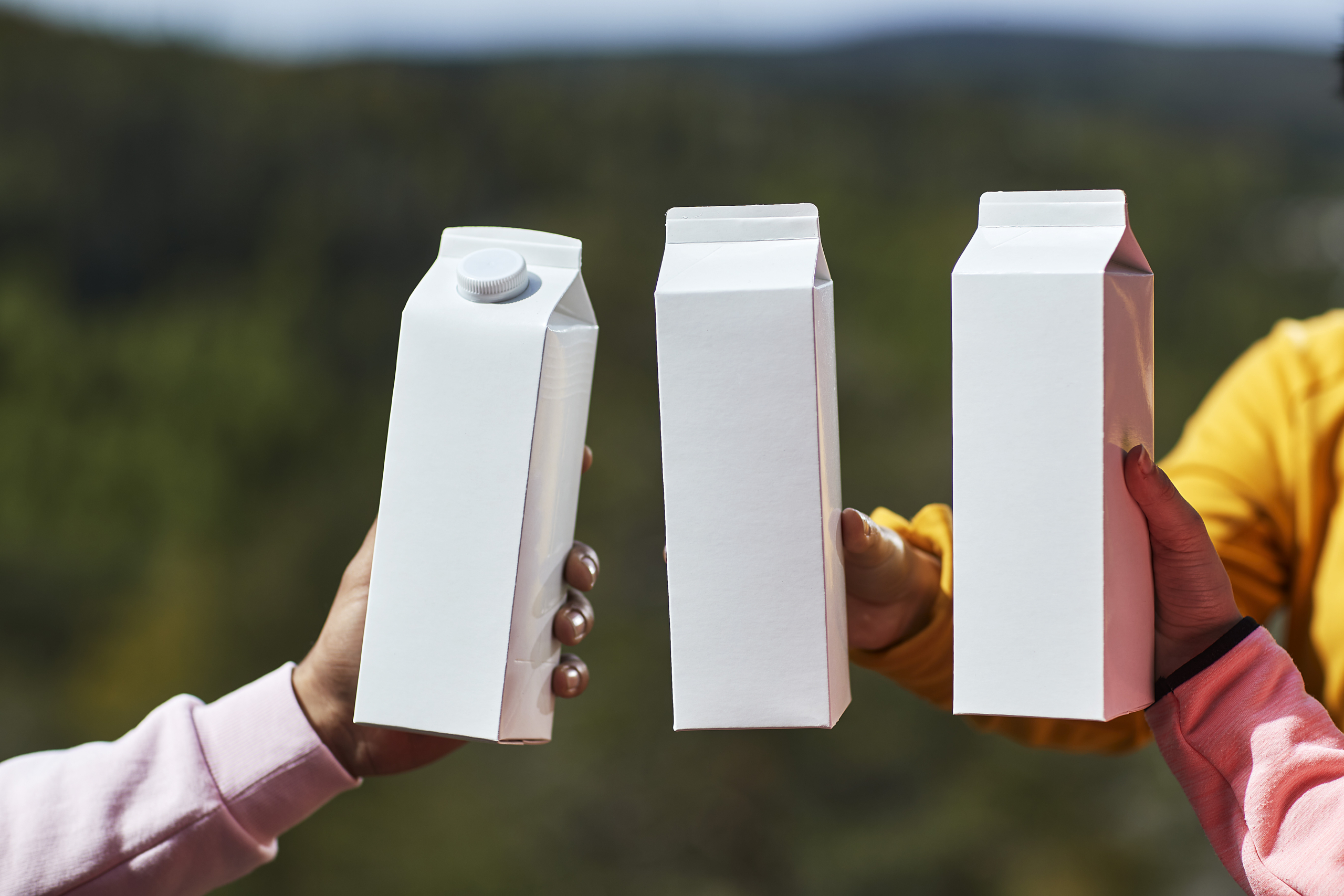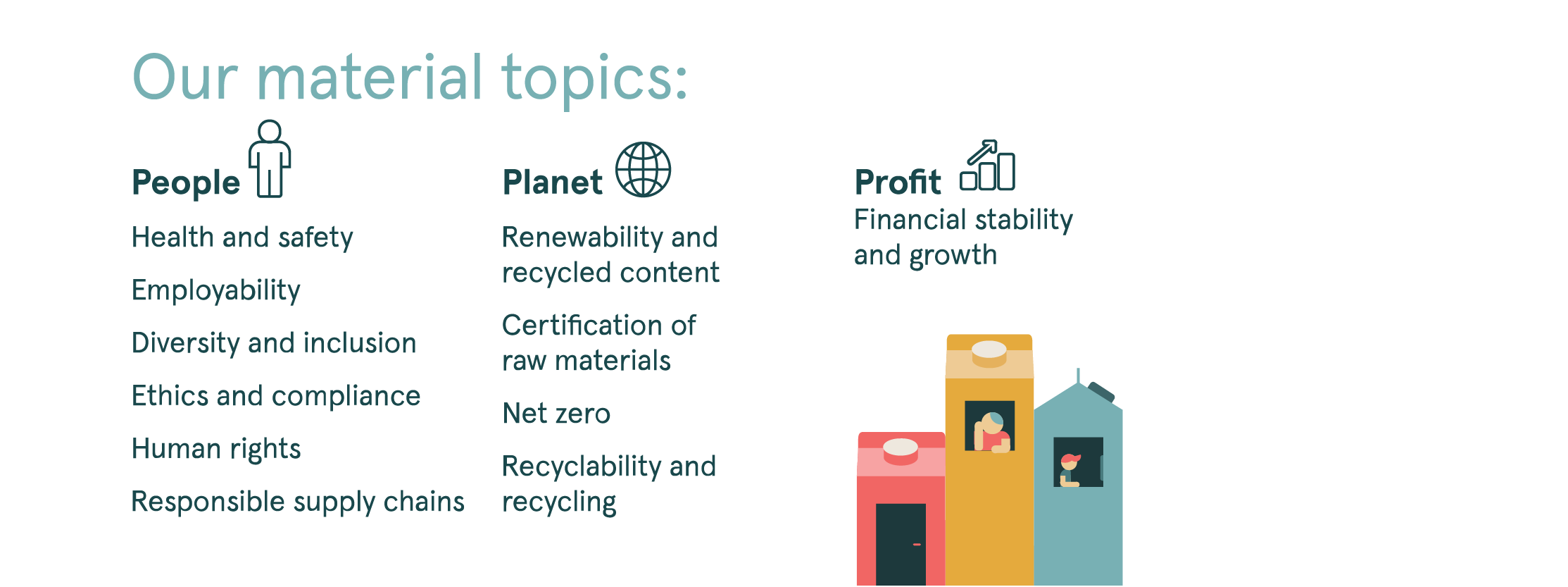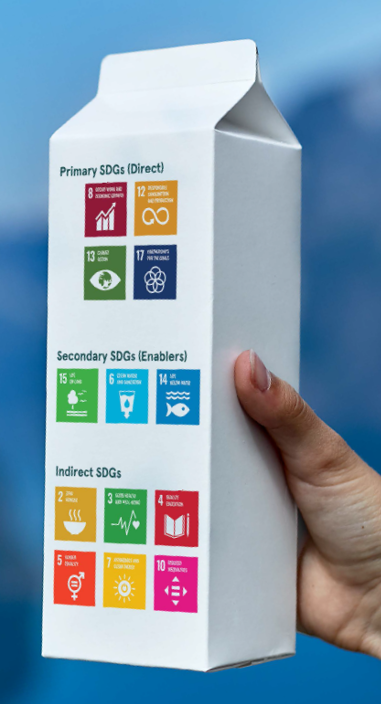Materiality assessment

Materiality is the process of determining relevant and significant focus areas for the company. For Elopak, this includes an assessment of to which extent various environmental, social and governance issues may impact the company and its stakeholders, as well as the environment and society.
Based on an established baseline, our materiality assessment is updated annually via internal and external stakeholders. Our engagement with various stakeholders is presented in the table below. Our material topics remain the same as last year, only slightly rephrased to fit standard terminology and our approach. These topics also form the structure of this report.

In 2022, Elopak conducted a climate risk and opportunity assessment based on the framework of the Taskforce on Climate-related Financial Disclosures (TCFD). The outcome of this is also included in the risk assessment presented in our Annual Report. We aim to strengthen our materiality assessment during 2023, further including the findings from various risk assessments into the matrix and thereby moving towards a double materiality, where financial impacts are included.
Context
Elopak works in accordance with the UN Sustainable Development Goals (SDGs). The 17 goals, with a total of 169 targets, cover key areas to ensure people can thrive and prosper on our planet. This fits well with Elopak’s global approach to sustainability and our vision: Chosen by people, packaged by nature.
Our approach to the SDGs forms the basis of our materiality assessment and includes the below evaluations, done in collaboration with key stakeholders:
- Which of the SDGs can our business and supply chain impact positively?
- Which of the SDGs can our business and supply chain potentially impact negatively?
- Which of the SDGs represent a risk to our business and supply chain if not successful?
- What will our company do differently in order to impact the SDGs positively?
- What is the potential indirect effect on other SDGs?
Based on these evaluations, we defined four key SDGs for Elopak. In this report, we report progress on the relevant targets for the below goals.


Goal 8: Decent work and economic growth
We create work for many people in our business and supply chain. Historically, we have had a strong focus on labor and ethical practices in our company. We now further increase this focus throughout our supply chain and build the skills and employability of our employees.

Goal 12: Responsible consumption and production
We are dependent on renewable natural resources, and the way we source fiber is a great opportunity for Elopak to contribute to sustainable forestry. We have targets for sourcing certified raw materials and helping improve recycling in all steps of our value chain.

Goal 13: Climate action
We take urgent action to combat climate change and its impact. Elopak is fully aware of our responsibility in the global increase of greenhouse gas emissions. We work to reduce our emissions from our operations and supply chain, and with ambitious Science-Based Targets in place, we commit to reducing our impact further.

Goal 17: Partnerships for the goals
We cannot achieve the SDGs working alone, and we have been working with suppliers and customers to reduce emissions and the use of raw materials. Strong international cooperation across value chains is needed to achieve the SDGs.
